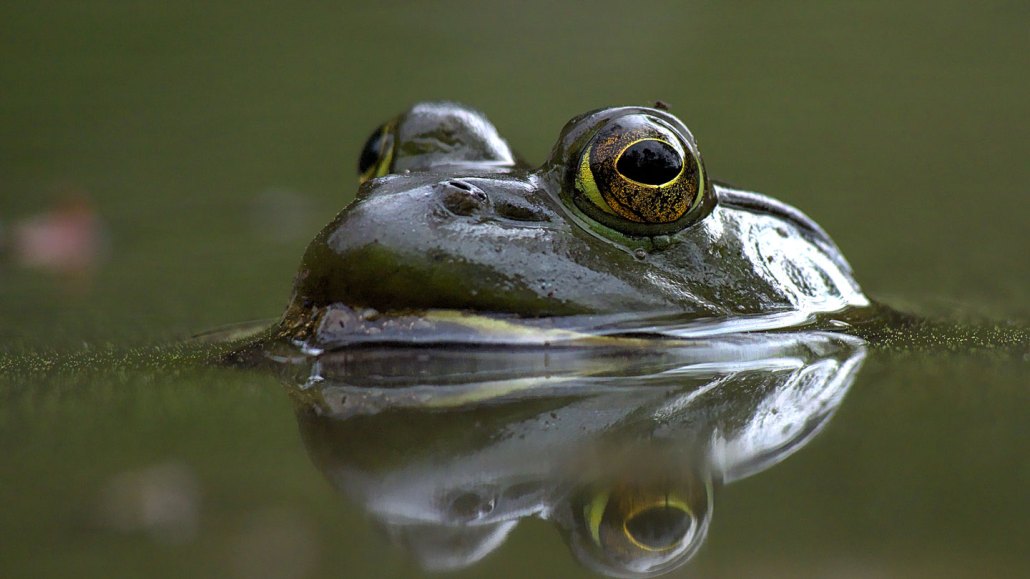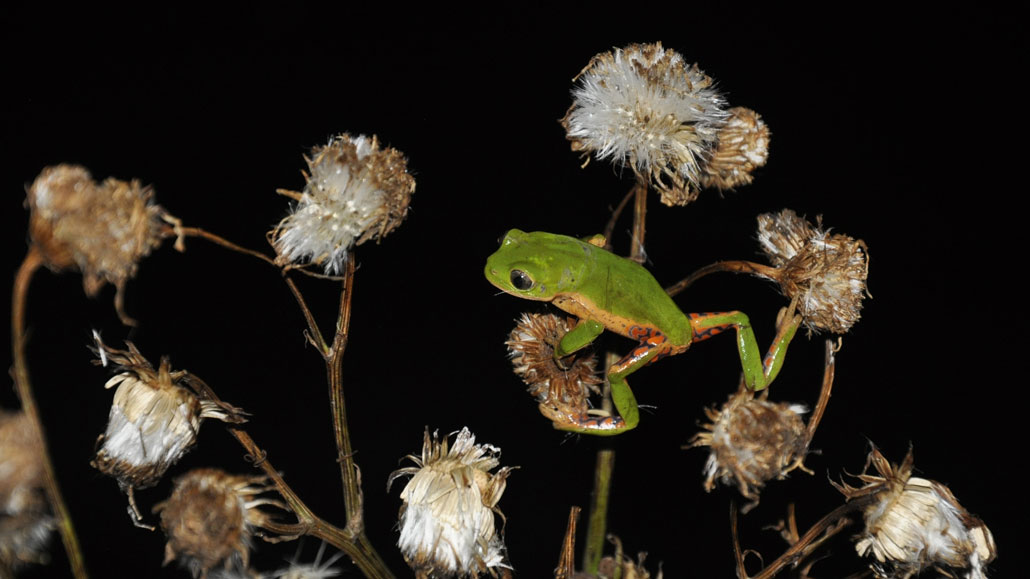
The invasive American bullfrog (one shown) might be living not far from a critically endangered species of frog, Pithecopus rusticus, with only one known population in Brazil.
Kent Ross/iNaturalist (CC BY-NC 4.0 DEED)
American bullfrog DNA has turned up not far from the only known habitat of Pithecopus rusticus — a small, critically endangered tree frog that lives in Brazil.
Bullfrogs are native to the eastern United States, but invasive elsewhere. Finding genetic traces of them in the high-elevation grasslands of Santa Catarina could spell signs of trouble for P. rusticus, researchers report in the March Journal for Nature Conservation.
These neon green, orange and black frogs are small. Adult males are about 35 millimeters from snout to vent — somewhere between the diameter of a golf ball and a quarter. After the species’ initial discovery in the Água Doce community in Santa Catarina state in 2009 and description in the scientific literature in 2014, researchers have conducted surveys in similar high elevation grasslands nearby. But they have never found another population.
“With rapid habitat degradation and a small population size, there is an urgent need to find additional populations for conservation efforts,” says ecologist Julia Ernetti of the State University of Campinas in Brazil.
Because field surveys turned up nothing, she and her colleagues tried another tactic — searching for signs of the frogs’ DNA in the environment. In December 2020, during breeding season for most amphibians, Ernetti and her colleagues collected 24 water samples in and around the Wildlife Refuge of Campos de Palmas. The refuge is about 2 kilometers from where P. rusticus was first discovered and has comparable conditions, suggesting it might be a suitable place for another population. But it’s separated from the known population by a highway.
The team analyzed the samples but failed to find any P. rusticus DNA. The analysis did reveal signs of the existence of the American bullfrog (Lithobates catesbeianus) in the refuge. “The traces of DNA serve as an alert of their potential presence and the possible harm to native species,” Ernetti says.

While startling, it is perhaps not unexpected to see traces of the frogs in the refuge. Farmers brought the bullfrogs to Brazil in 1935 to raise for human consumption, Ernetti says, and there are both farmed and wild populations documented in Santa Catarina and its neighboring state, Paraná.
The situation is alarming, says Nathan Snow, a wildlife biologist with the U.S. Animal and Plant Health Inspection Service based in Fort Collins, Colo. “Bullfrogs are the ultimate invaders: They are generalist and voracious eaters, they outcompete native amphibians for food resources, and they reproduce prolifically.”
Along with competing for food and territory, the bullfrogs could spread diseases like the deadly chytrid fungus, a pathogen that has caused the extirpation of whole populations of amphibians across the Americas (SN: 5/10/18). The bullfrogs’ call also overlaps and may interfere with those of several native species in the area. “Any interference with this communication could directly impact [native species’] reproductive success, potentially leading to population declines and an increased risk of extinction,” Ernetti says.
Bullfrogs can also eat P. rusticus, another threat to its population, though there are no signs, yet, of that kind of predation.
P. rusticus existence is so fragile that any losses due to bullfrogs would be a big problem, Ernetti says. “Our detection alerts us to the need for the implementation of efficient strategies for the detection and eradication of exotic and invasive species, aiming to protect native species.”
That might be easier said than done, Snow says. Once established, bullfrogs are very difficult to get rid of. “There are few, if any, effective and efficient control methods to manage invasive bullfrogs,” he and wildlife biologist Gary Witmer wrote in a 2010 review. “For sensitive ecosystems like the subtropical highland grasslands of Brazil,” Snow says, “an invasion of bullfrogs could be devastating for endemic and endangered amphibians.”





